Irresistible Sweet Potato Buns with Gooey Baked Camembert Dip: Your Ultimate Party Appetizer
Imagine the scene: a gathering of your closest friends, a warm, inviting aroma filling the air, and then, the reveal – a stunning platter of golden, fluffy sweet potato buns encircling a bubbling, melted wheel of Camembert cheese, ready for dipping. This isn’t just an appetizer; it’s an experience, a centerpiece that guarantees oohs and aahs, and most importantly, satisfied smiles. Whether you’re a seasoned baker or new to the magic of homemade bread, this Sweet Potato Bun with Baked Camembert Dip recipe is designed to impress with surprisingly little fuss. The moment the warm, garlic and rosemary-infused scent wafts from your oven, you’ll wish you had discovered this culinary delight sooner.
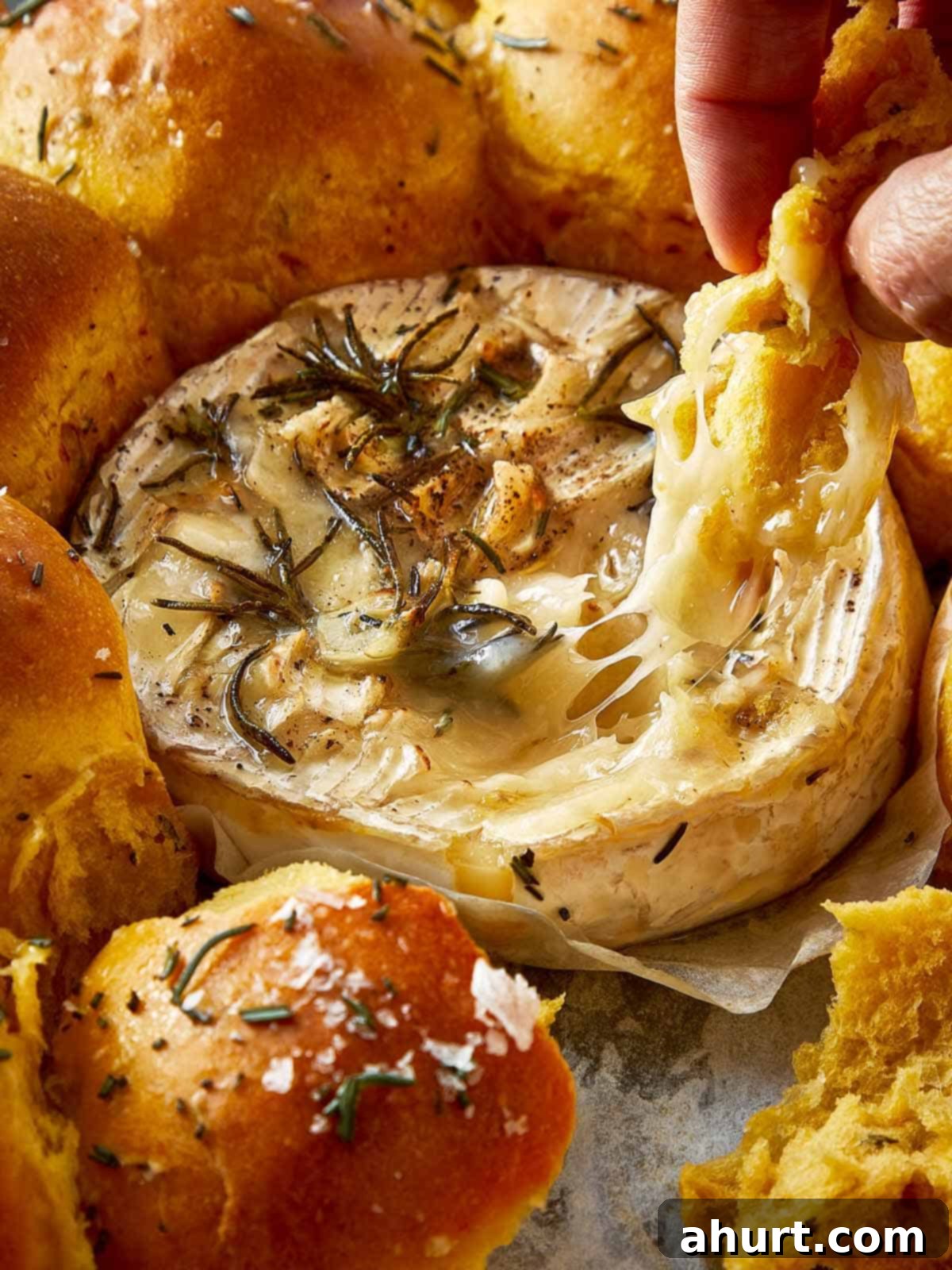
Why This is the Perfect Dinner Party Appetizer
When I host a dinner party, my goal is to create memorable moments without being tethered to the kitchen. While I adore classic crowd-pleasers like my famous guacamole and savory teriyaki meatballs, this Sweet Potato Bun and Baked Camembert Dip offers a unique blend of elegance and simplicity that truly sets it apart. It’s the complete package, offering several compelling reasons why it consistently steals the show:
- Looks Impressive, Secretly Easy: This dish is a masterclass in culinary deception. It presents as a sophisticated, from-scratch creation, leading your guests to believe you’ve spent hours meticulously baking. In reality, the steps are surprisingly straightforward, making it a high-impact centerpiece that requires refreshingly low effort. It’s the perfect way to look like a gourmet chef without the stress.
- The Ultimate Shared Experience: More than just food, this appetizer fosters connection. It’s inherently interactive; everyone naturally gathers around, eagerly pulling apart the soft, sweet, golden buns and dipping them into the gloriously melted, savory cheese. This communal act of sharing and dipping sparks conversation and laughter, transforming a simple snack into a memorable communal event. The irresistible aromas of freshly baked bread infused with garlic and rosemary are a natural magnet, drawing everyone in.
- Make-Ahead Friendly for Stress-Free Hosting: One of the biggest advantages for any host is the ability to prepare dishes in advance. With this recipe, you can get ahead by prepping the dough balls and arranging them on the baking tray. Then, when your guests arrive and you’re ready to serve, simply place the Camembert in the center and pop the tray into the oven. This thoughtful feature frees you up to enjoy your company rather than scrambling in the kitchen.
- Scales for Any Crowd: Whether you’re hosting an intimate gathering or a larger party, this recipe is incredibly versatile. If you’re expecting a bigger group, it’s effortlessly scalable – simply prepare two trays, and double the deliciousness!
- A Harmonious Blend of Flavors and Textures: The combination of slightly sweet, fluffy sweet potato buns with the rich, savory, and creamy baked Camembert is a match made in heaven. The soft interior of the buns contrasts beautifully with the gooey cheese, offering a delightful sensory experience with every bite. The addition of aromatic garlic and rosemary elevates the entire dish, creating a balanced and utterly addictive flavor profile.
Why Camembert Cheese?
When it comes to choosing the perfect melting cheese for a dip, the debate between Camembert and Brie is a lively one. Initially, I was torn, so I devised a foolproof plan: a family blind taste test! I prepared the dish first with Brie, letting everyone enjoy it without knowing the specifics. The next day, I served the same recipe, this time featuring Camembert. The feedback was immediate and unanimous: “Why does this one taste better?” Bingo!
My intuition proved correct. Camembert, when baked, tends to release a more robust and complex flavor profile compared to Brie. While some might find its baked flavor a touch more assertive or even slightly bitter on its own, this characteristic is precisely what makes it ideal for this recipe. The inherent sweetness of the sweet potato buns perfectly balances the heightened savoriness and subtle bitterness of the baked Camembert, resulting in a harmonious symphony of sweet and savory notes. You truly get the best of both worlds – a deep, rich cheese flavor complemented by the gentle sweetness of the bread, creating an incredibly addictive dip that will leave everyone craving more.
Essential Ingredients for an Unforgettable Dip
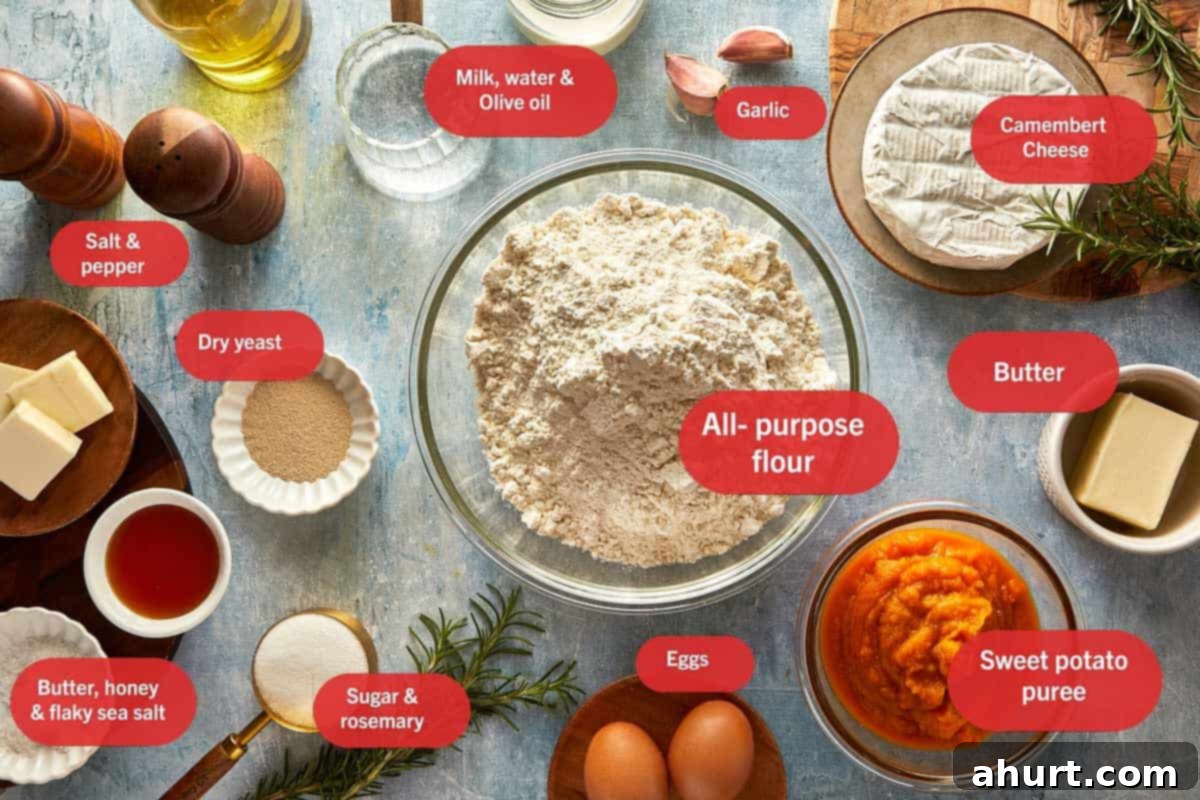
Crafting this delightful appetizer relies on a few key ingredients, each playing a crucial role in achieving the perfect balance of flavor and texture. Here’s a closer look at what you’ll need:
- Camembert Cheese: As proven by my family’s blind taste test, Camembert is the star of the dip. Its ability to intensify in flavor when baked creates a wonderfully savory and gooey center that pairs flawlessly with the slightly sweet bread.
- Sweet Potato Purée: This ingredient is a true game-changer for the buns. I confess, I was initially skeptical about incorporating sweet potato into bread, but after making it with my mother the first time, I was completely won over. It imparts a beautiful golden hue, adds natural sweetness, and contributes to an incredibly moist and fluffy texture, elevating the buns beyond ordinary bread. You can use either homemade or high-quality canned sweet potato puree for convenience.
- Honey, Butter & Salt: This trio forms the irresistible topping for the baked buns. Continuing our theme of sweet and savory harmony, a brush of warm honey butter provides a glistening finish and a touch of sweetness, while a sprinkle of flaky sea salt adds a delightful textural contrast and enhances all the other flavors, making the buns visually pop and taste even better.
- Fresh Garlic & Rosemary: While cheese is delicious on its own, it truly shines when paired with aromatic companions. Much like my beloved Pull-Apart Garlic Bread, this dish absolutely demands the pungent warmth of garlic and the fragrant earthiness of fresh rosemary. These herbs are infused into both the buns and the baked Camembert, tying all the flavors together beautifully.
- Yeast and All-Purpose Flour: These are the fundamental building blocks for any great bread. Active dry yeast ensures the buns rise beautifully, yielding a light and airy crumb, while all-purpose flour provides the necessary structure. Using fresh yeast and good quality flour is essential for achieving those perfectly soft and tender sweet potato buns.
- Milk and Water: The liquid base for activating the yeast and hydrating the dough, ensuring a soft and pliable texture.
- Eggs: Add richness, color, and structure to the buns, contributing to their tender crumb.
Note: For the complete list of ingredients and precise measurements, please refer to the detailed Recipe Card below.
Step-by-Step Guide to Perfection
Creating this stunning appetizer is simpler than you might think. I’ve broken down the process into easy-to-follow steps (pun absolutely intended!) to ensure your success. Remember, patience is a key ingredient when working with yeast dough, so enjoy the process.
Crafting Your Sweet Potato Buns:
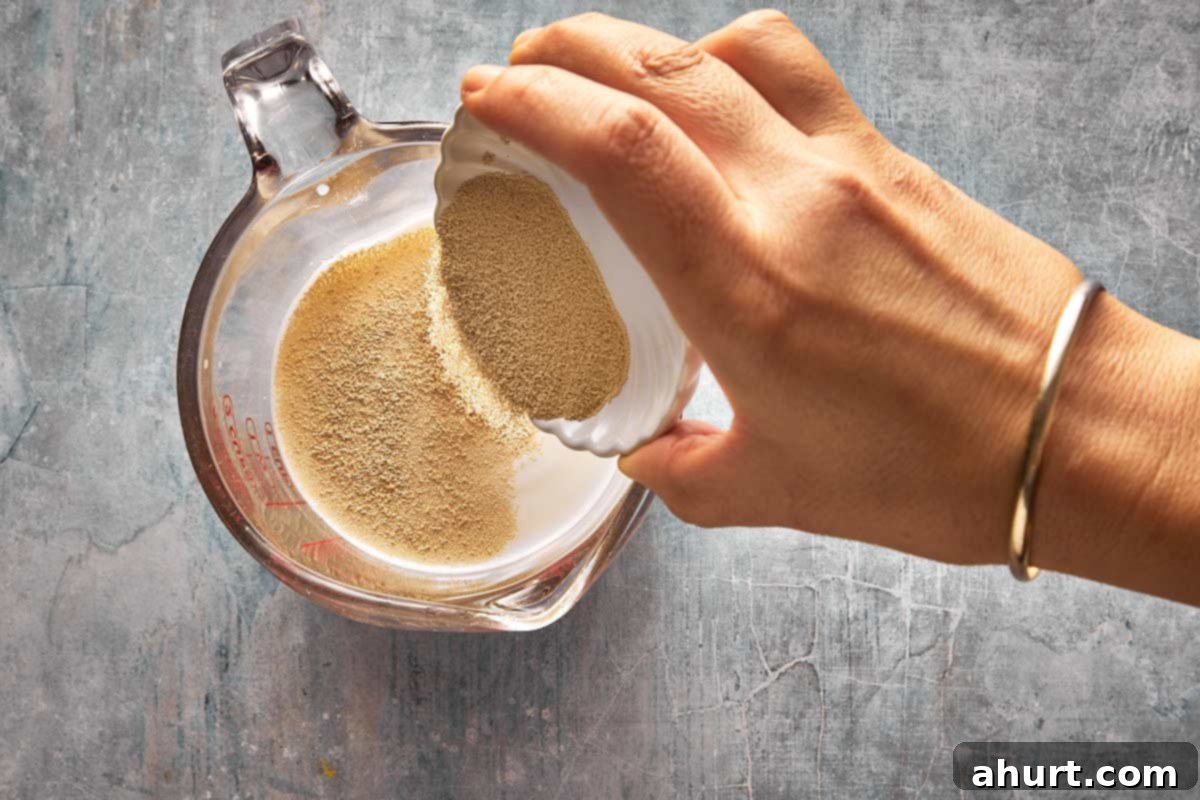
- Activate the Yeast: In a microwave-safe bowl, gently warm the water and milk to about 100°F (40°C). This temperature is crucial – too hot will kill the yeast, too cold won’t activate it. Stir in a teaspoon of sugar, then sprinkle the dry yeast over the top. Let this mixture sit undisturbed for 5-10 minutes. You’ll know it’s ready when it becomes visibly foamy, indicating the yeast is active and alive. If it doesn’t foam, your yeast might be expired, and it’s best to start again.

- Combine Wet Ingredients: In the bowl of a stand mixer fitted with a dough hook (or a large mixing bowl if kneading by hand), combine the remaining sugar, eggs, salt, melted butter, finely chopped fresh rosemary, and the sweet potato purée. Mix briefly on medium speed until just combined. Then, pour in your activated yeast mixture. This ensures all the flavor bases are covered before adding the flour.
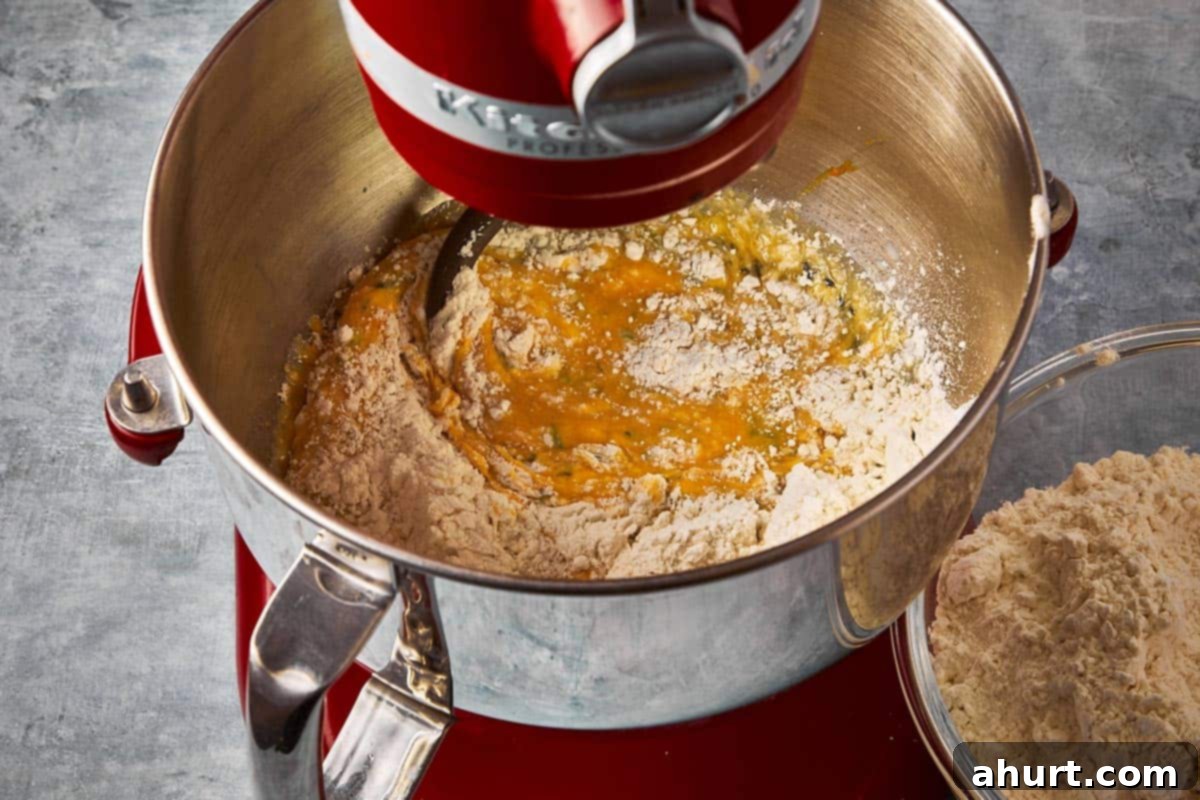
- Form and Knead the Dough: Begin adding the all-purpose flour gradually, mixing on low speed until a soft, shaggy dough forms. Increase the mixer speed to medium and knead for about 5-6 minutes. The dough should become smooth and elastic, pulling away from the sides of the bowl. It’s important that the dough remains slightly sticky at the very bottom of the bowl; this stickiness is your secret weapon for fluffy, moist buns. Resist the temptation to add more flour than specified, as this can result in dense, dry buns.
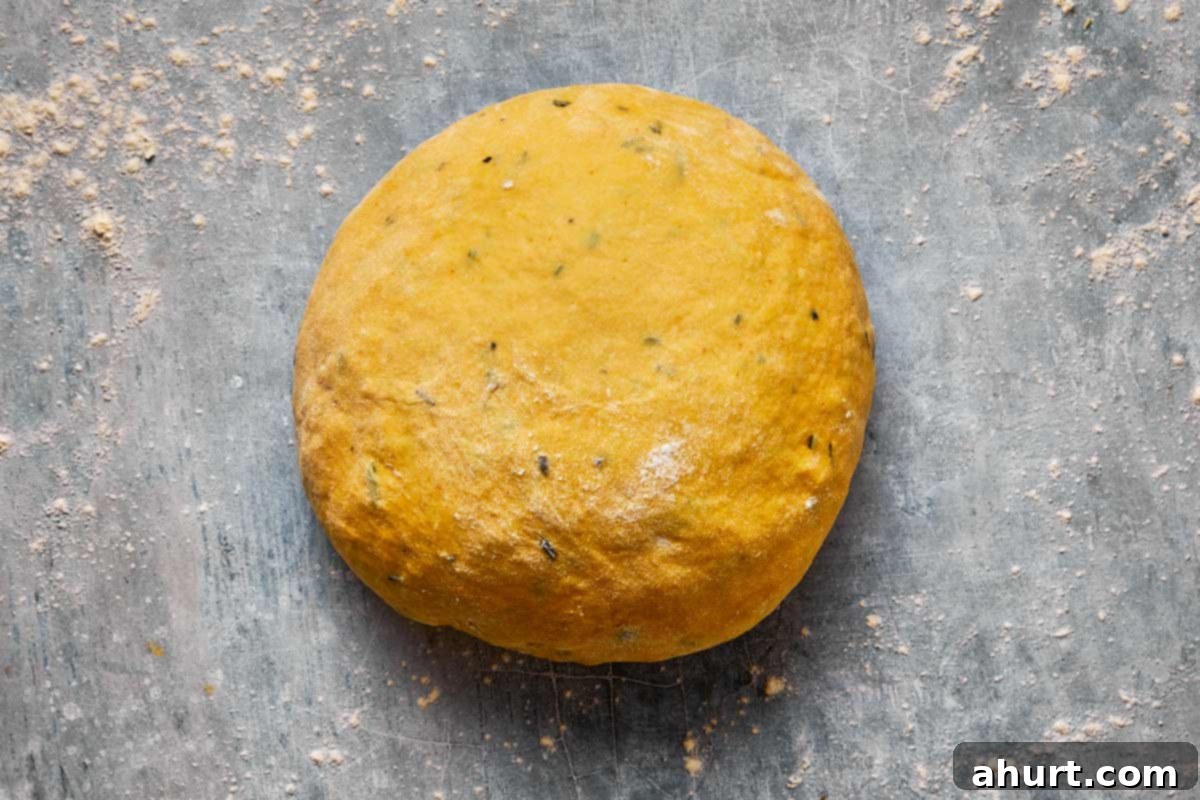
- First Rise: Lightly flour a clean surface, then transfer the dough onto it. Gently shape the dough into a smooth ball. Place this ball into a lightly oiled bowl, turning it once to coat all sides with oil. Cover the bowl tightly with plastic wrap to prevent a crust from forming. Let it rise in a warm, draft-free place for approximately 1 hour, or until it has roughly doubled in size. This first rise develops the flavor and structure of the bread.
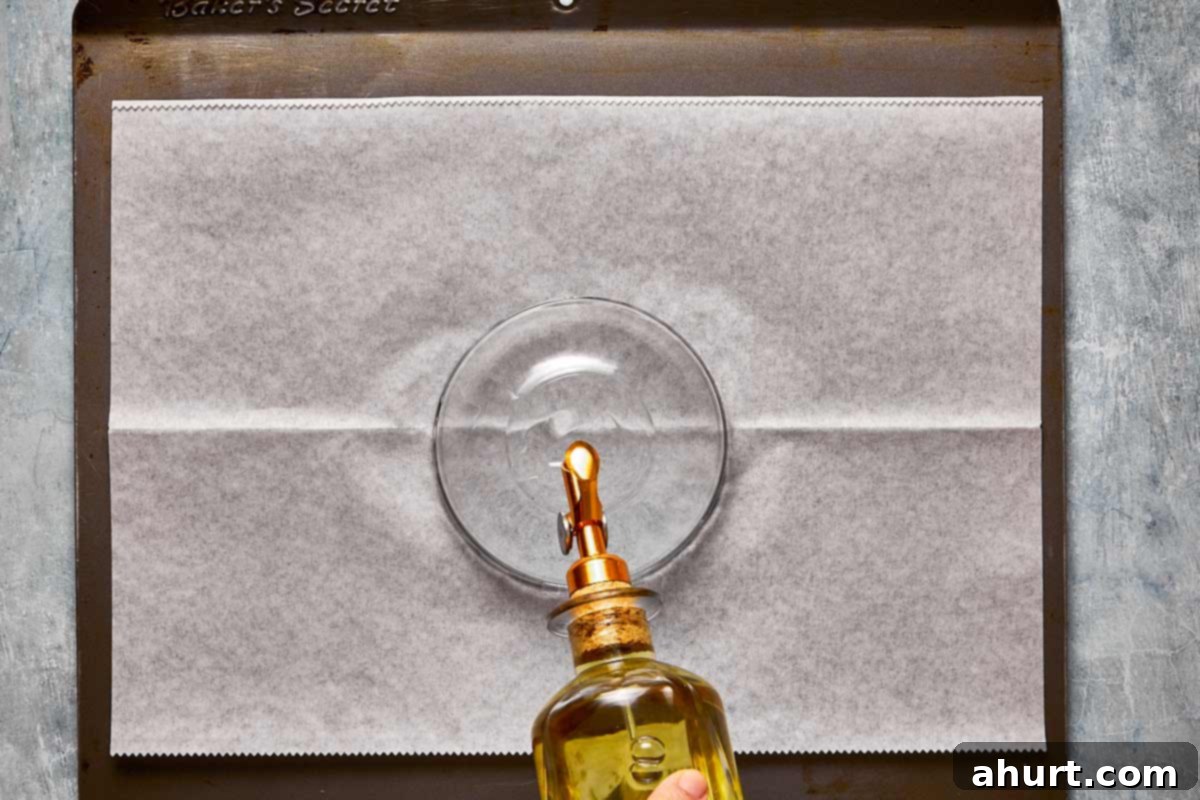
- Prepare for Shaping: Line a large baking tray with parchment paper. In the center of the tray, place a lightly oiled, oven-safe bowl that is roughly the same size as your Camembert wheel. This bowl acts as a placeholder for the cheese, ensuring a perfect ring of buns. Gently punch down the risen dough to release the air, then transfer it to a lightly floured surface. Divide the dough into 16 equal portions – aiming for about 85 grams each for consistency.
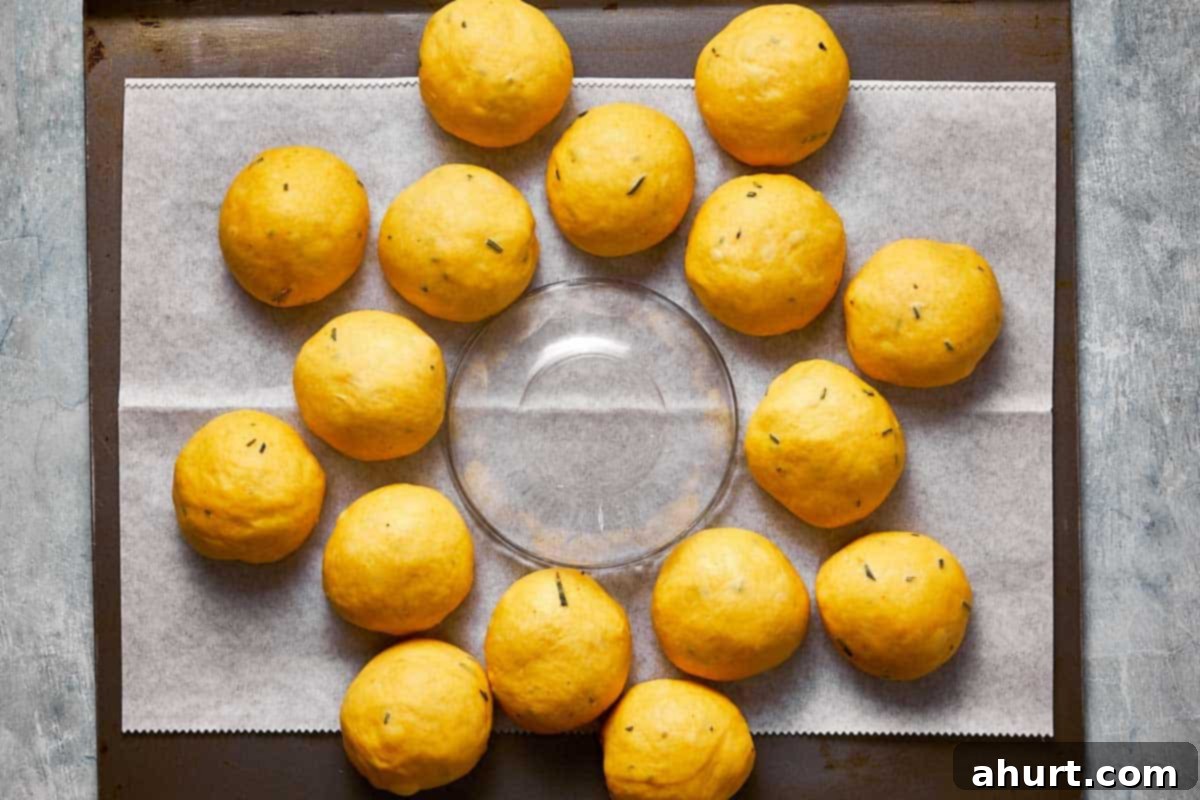
- Shape and Second Rise: Roll each dough portion into a smooth, tight ball. Arrange these dough balls evenly around the central oiled bowl on your prepared baking tray, leaving a little space between them. Remember, they will expand during the second rise and baking. Loosely cover the tray with plastic wrap or a clean kitchen towel and let the buns rise again in a warm place for another hour, or until they look puffy and have nearly doubled in size. Once fully risen, carefully remove the central placeholder bowl and replace it with a fresh piece of parchment paper. Finally, place your wheel of Camembert cheese directly in the center of the ring of risen buns.
Preparing the Baked Camembert:
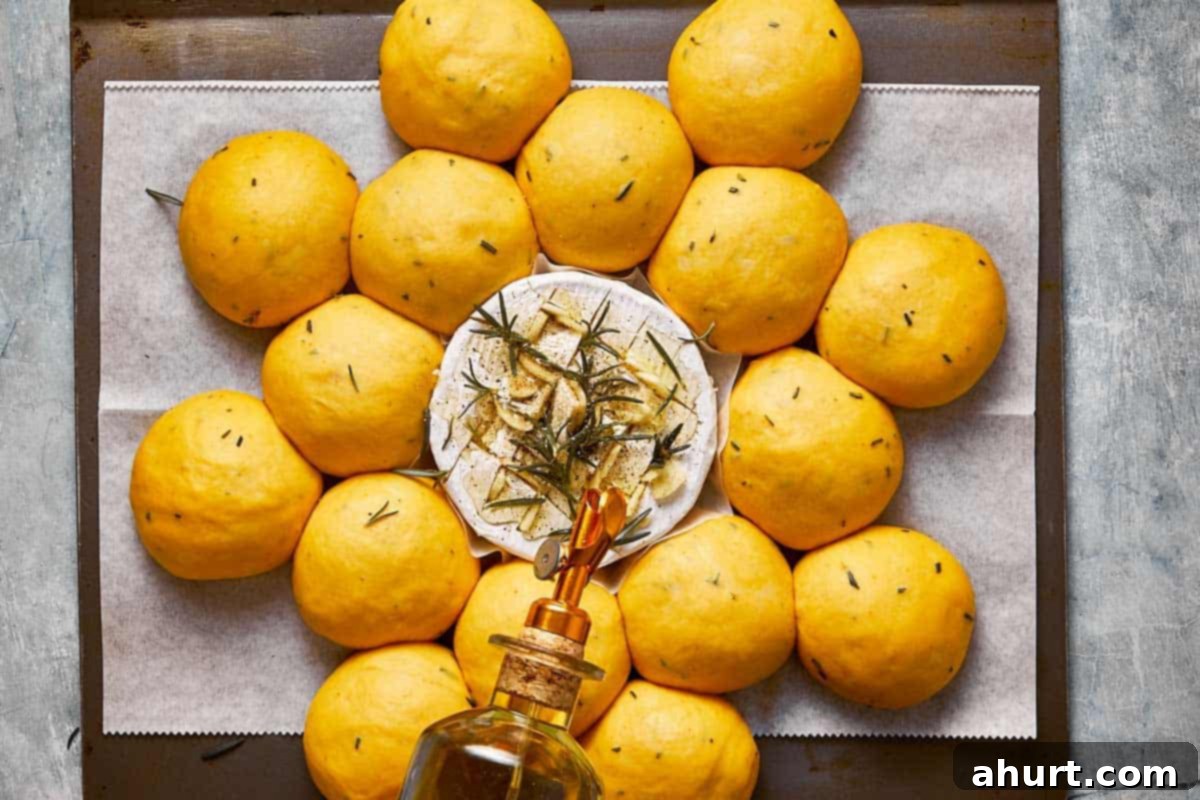
- Flavor the Cheese: Using a sharp knife, gently score the top rind of the Camembert in a crosshatch pattern. Be careful not to cut all the way through the cheese. Insert thin slices of fresh garlic and small sprigs of rosemary into these cuts. Drizzle the cheese generously with olive oil, and finish with a crack of freshly ground black pepper. This infuses the cheese with incredible aromatics as it bakes.
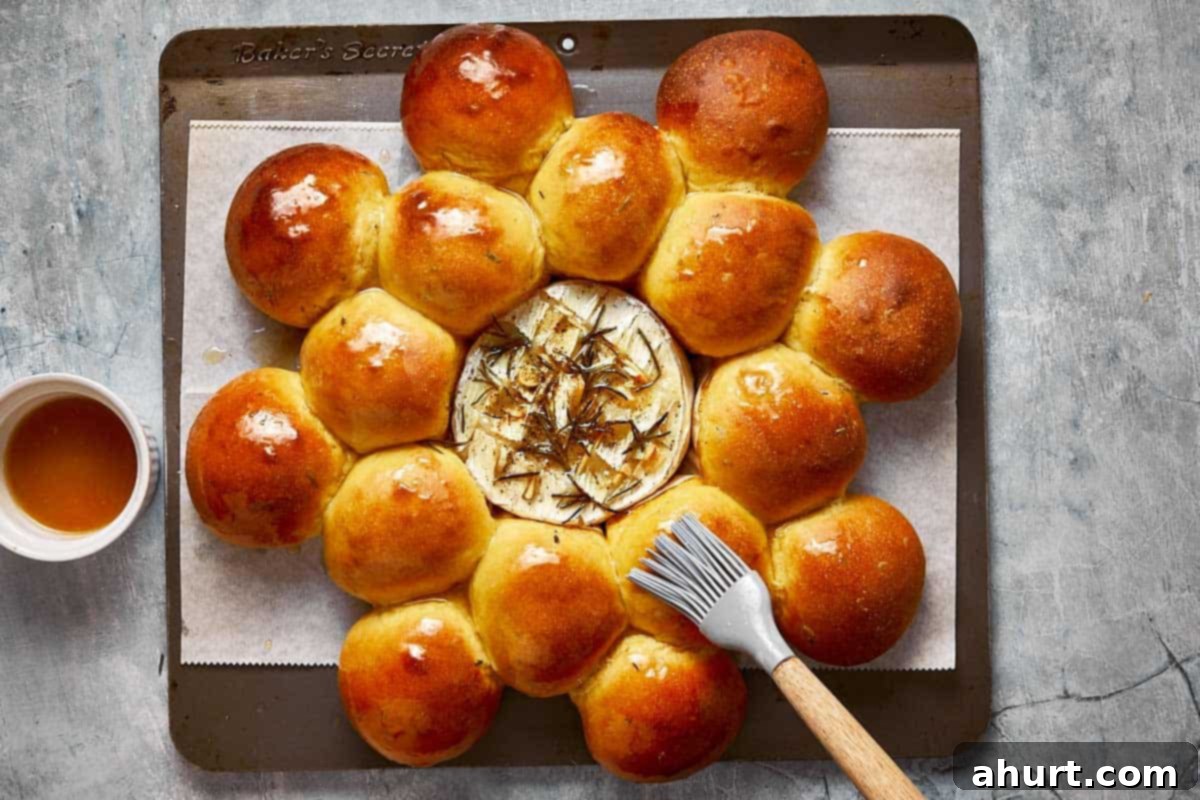
- Bake to Perfection: Preheat your oven to 350°F (180°C). Place the baking tray with the buns and prepared Camembert into the preheated oven. Bake for 20-25 minutes, or until the sweet potato buns are gorgeously golden brown and sound hollow when tapped, and the Camembert cheese is irresistibly soft, molten, and bubbling in the center. Keep an eye on the buns to prevent over-browning.
Finishing with Honey Butter Glaze:
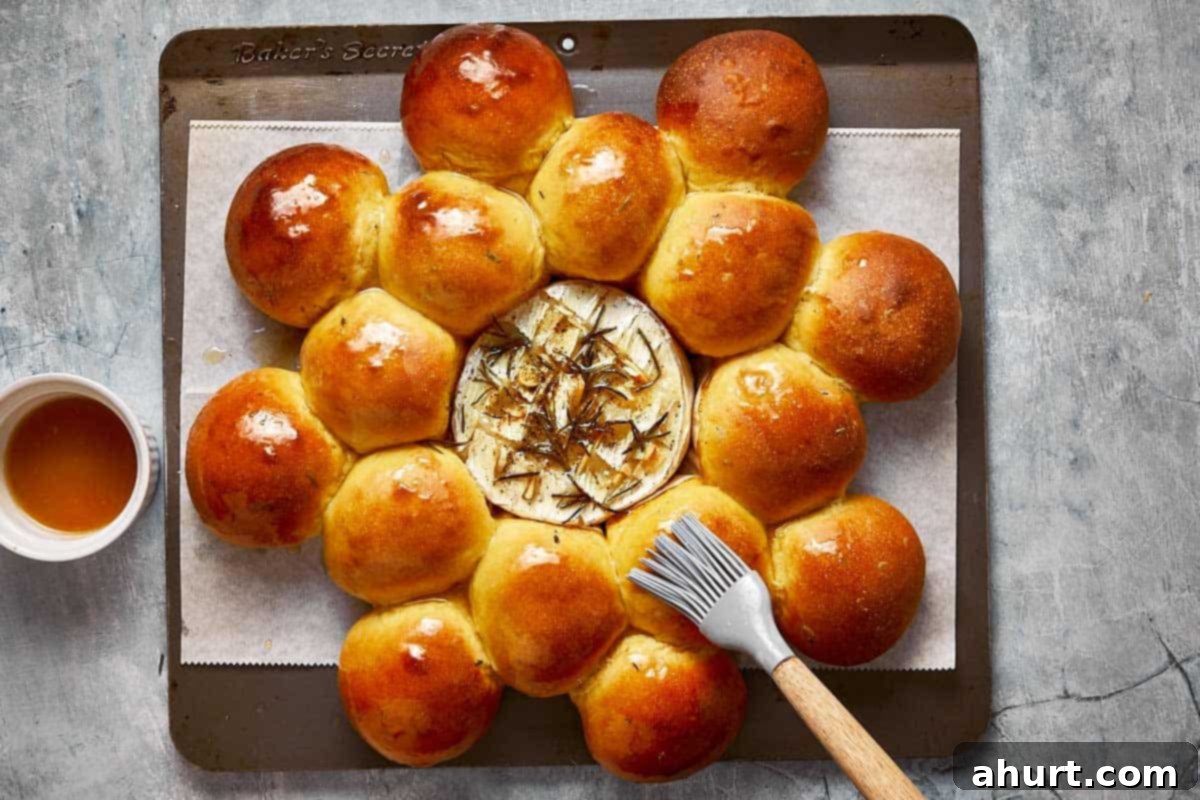
- Prepare the Glaze and Garnish: While the buns are still hot from the oven, quickly melt the butter and combine it with the honey in a small bowl. Immediately brush this glistening honey butter mixture generously over the tops of all the warm sweet potato buns. This adds moisture, shine, and another layer of subtle sweetness. Finish by sprinkling with flaky sea salt and a few extra pinches of fresh rosemary for both flavor and visual appeal.
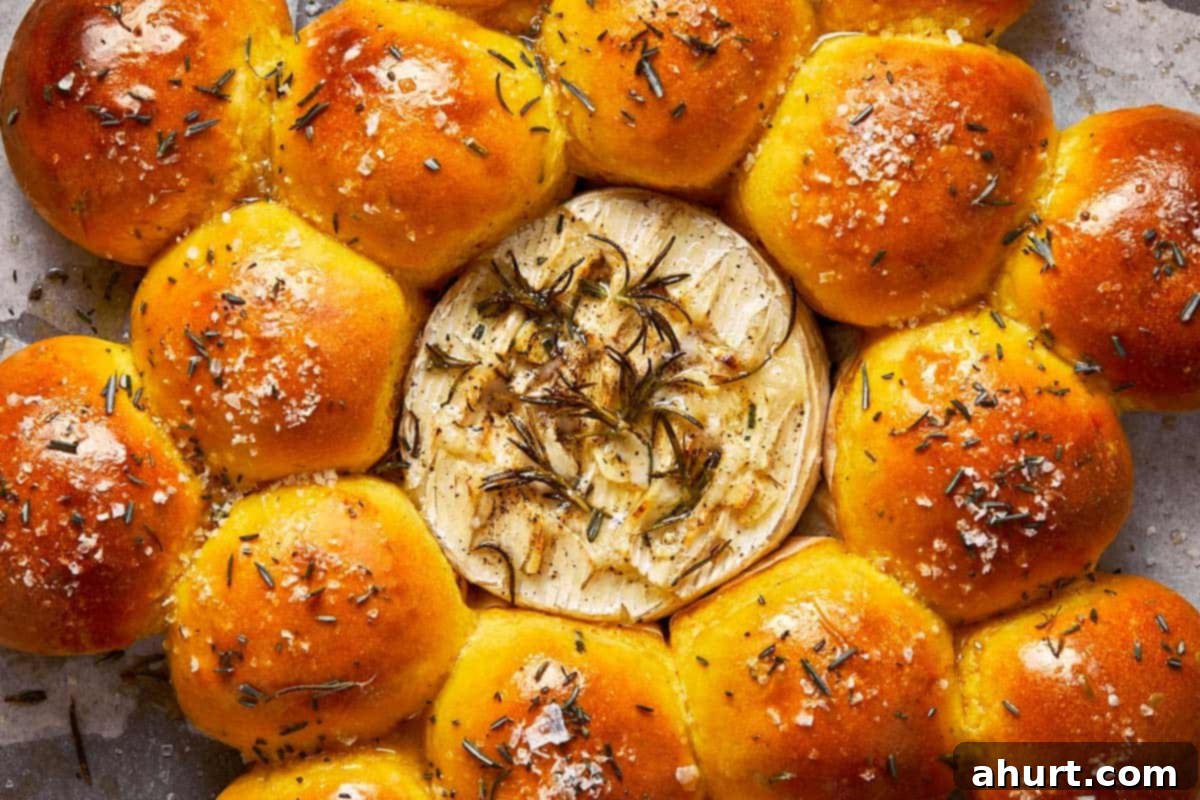
- Serve Immediately: The magic of this dish is best enjoyed fresh and warm. Encourage your guests to pull apart the soft, fragrant buns and dip them generously into the molten, aromatic Camembert. Watch as they delight in this perfect blend of sweet and savory.
While this dish is a magnificent standalone appetizer, it also pairs beautifully with other dishes if you’re planning a more extensive menu. Consider serving it alongside Easy Honey Garlic Pork Chops, comforting Homemade Gnocchi, or even my favorite Buffalo Chicken Dip for a truly indulgent spread. The possibilities are endless when you have such a versatile and delicious base.
Recipe FAQs & Pro Tips
To help you achieve perfect results every time, here are answers to some common questions and a few extra tips:
While it’s technically possible to freeze baked bread, I strongly advise against it for this particular recipe. The undeniable magic of this dish lies in the unparalleled quality and aroma of freshly baked bread, served warm directly from the oven. The difference in texture and flavor when enjoyed fresh is truly significant and elevates the entire experience. For the best “wow-factor” and gourmet taste, serve these buns soon after they’re baked.
Absolutely! While Camembert was the unanimous family favorite for its deeper, more savory baked flavor, Brie works perfectly as a delightful substitute. If you prefer a slightly milder, less intense cheese dip with a creamier texture, Brie will still deliver a wonderful experience. Feel free to experiment with what you enjoy most!
The cheese should be visibly soft and slightly sunken in the center, indicating that it has melted beautifully within its rind. For a definitive test, gently press down on the top rind with a spoon or spatula – it should feel completely molten and liquid underneath. If it still feels firm, bake for a few additional minutes until it reaches that irresistible gooey consistency.
Yes, you can! After the first rise (Step 4), gently punch down the dough, shape it into a ball, and place it back in the oiled bowl. Cover tightly with plastic wrap and refrigerate overnight. On the day of serving, take the dough out of the fridge at least an hour before you plan to shape the buns to allow it to come to room temperature and relax, then proceed with Step 5.
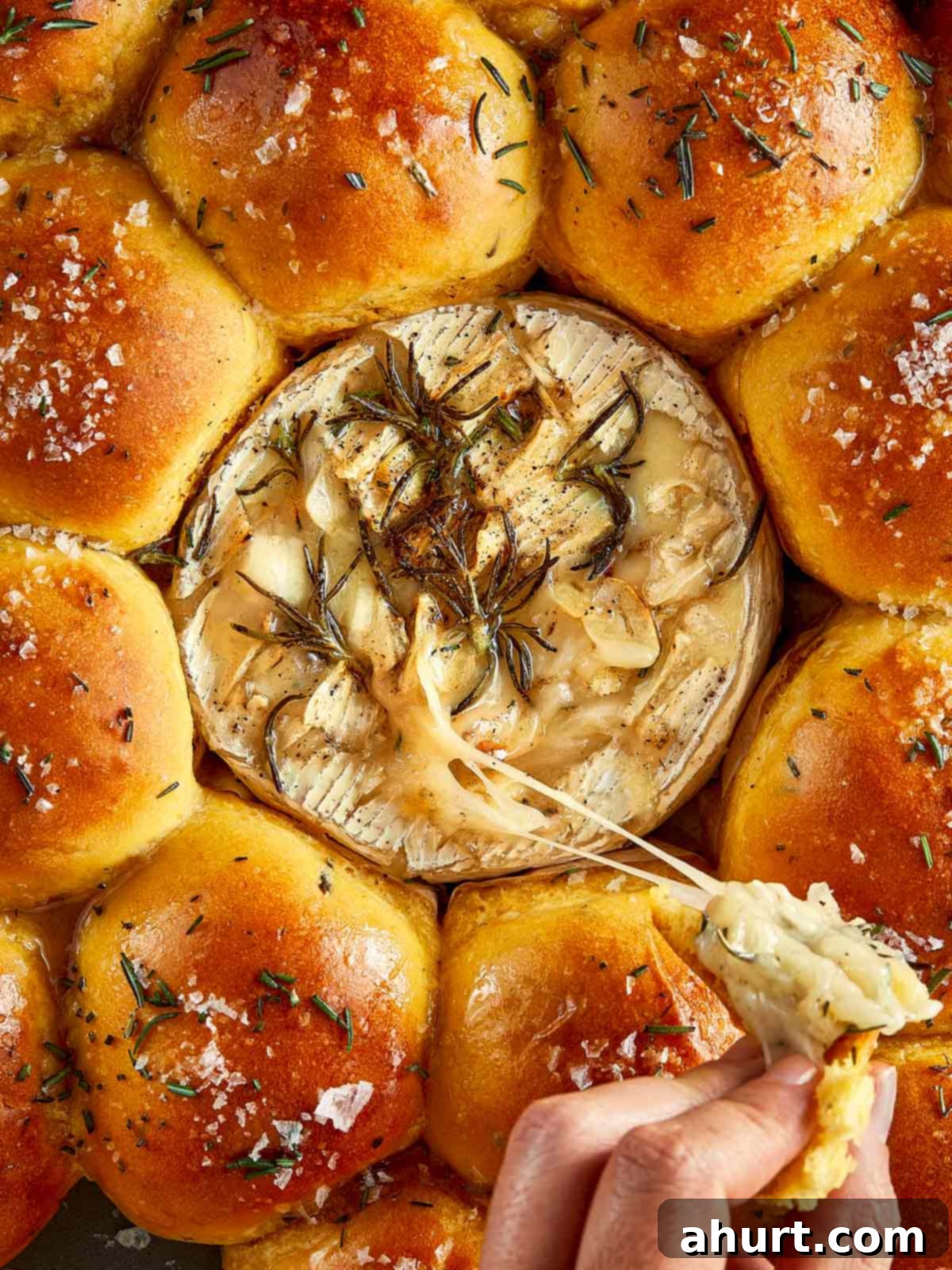
Watch It Being Made: Visual Guide
Sometimes, seeing is believing! For those who prefer a visual walkthrough, check out this video tutorial. It covers all the steps, from activating the yeast to pulling the golden buns from the oven, ensuring you can follow along with confidence and create your own perfect Sweet Potato Buns with Baked Camembert Dip.
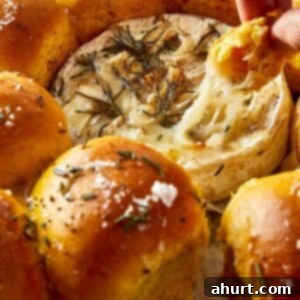
Pin
Sweet Potato Bun Cheese Dip
Ingredients
Sweet Potato Bun
- ½ cup water
- ¼ cup milk
- ⅓ cup sugar
- 2 ¼ tsp dry yeast
- 2 large eggs
- 1 ½ tsp salt
- 6 tbsp unsalted butter
- 2 ½ tsp fresh rosemary finely chopped
- 1 cup sweet potato puree
- 4 ⅔ cup all-purpose flour
Roasted Camembert
- 1 wheel camembert cheese
- 2 cloves garlic thinly sliced
- 2 small rosemary sprigs
- 1 tsp olive oil
Honey Butter
- 3 tbsp butter melted
- 1 ½ tbsp honey
- flaky sea salt to taste
Instructions
For the Sweet Potato Buns
-
In a small microwave-safe bowl, warm the water and milk to 100°F (40°C). Stir in 1 tsp sugar, then sprinkle over the dry yeast. Let sit for 5–10 minutes, until foamy.
-
In the bowl of a stand mixer fitted with a dough hook (or by hand), combine the remaining sugar, eggs, salt, melted butter, rosemary, and sweet potato purée. Mix briefly on medium speed, then pour in the yeast mixture.
-
Add the flour gradually, mixing on low speed until a soft dough forms. Increase to medium speed and knead for 5–6 minutes, until smooth and pulling away from the bowl (the dough should remain slightly sticky at the bottom).
-
Transfer the dough to a lightly floured surface, shape it into a ball, and place it into a lightly oiled bowl. Cover with plastic wrap and let rise in a warm place for 1 hour, or until doubled in size.
-
Line a baking tray with parchment paper. Place a lightly oiled bowl (same size as the Camembert) in the center, we’re going to replace this with the cheese after. Divide the dough into 16 equal portions (about 85 g each).
-
Roll each into a ball and arrange evenly around the bowl, leaving space between them for rising. Cover loosely and let rise for 1 more hour. Once risen, remove the bowl and replace it with parchment paper. Place the Camembert in the center of the ring.
For the Baked Camembert
-
Score the top of the cheese with a sharp knife. Insert garlic slices and rosemary into the cuts, drizzle with olive oil, and season with pepper.
-
Bake at 350°F (180°C) for 20–25 minutes, or until the buns are golden brown and the Camembert is soft and melty.
For the Honey Butter
-
In a small bowl, combine the melted butter and honey. Brush the buns with honey butter immediately after baking, then sprinkle with flaky salt and a little rosemary.
-
Serve immediately, using the warm buns to dip into the melted Camembert.
Notes
Yeast Activation – The liquid should feel warm to the touch (around 100°F / 40°C). If it’s too hot, it can kill the yeast; if it’s too cold, the yeast won’t activate properly. The mixture should become foamy within 10 minutes if it doesn’t, your yeast may be expired.
Camembert Substitute – If you can’t find Camembert, Brie works beautifully too. You can also use a small wheel of triple-cream cheese for an extra rich dip.
Honey Butter Alternatives – Swap honey for maple syrup or a drizzle of garlic butter for a savory version. For a festive touch, sprinkle with chopped thyme or crushed pink peppercorns before serving.
Nutrition
Nutrition information is automatically calculated, so should only be used as an approximation.
